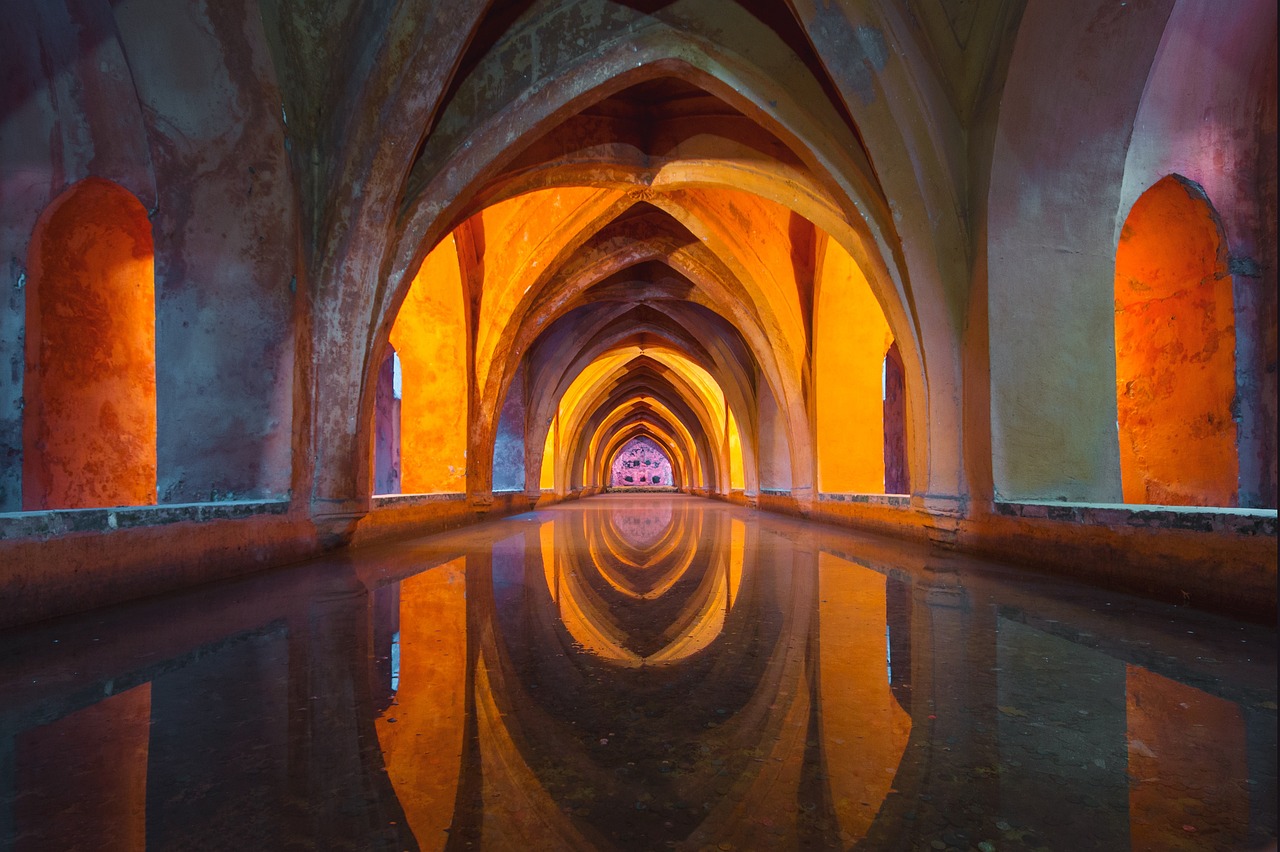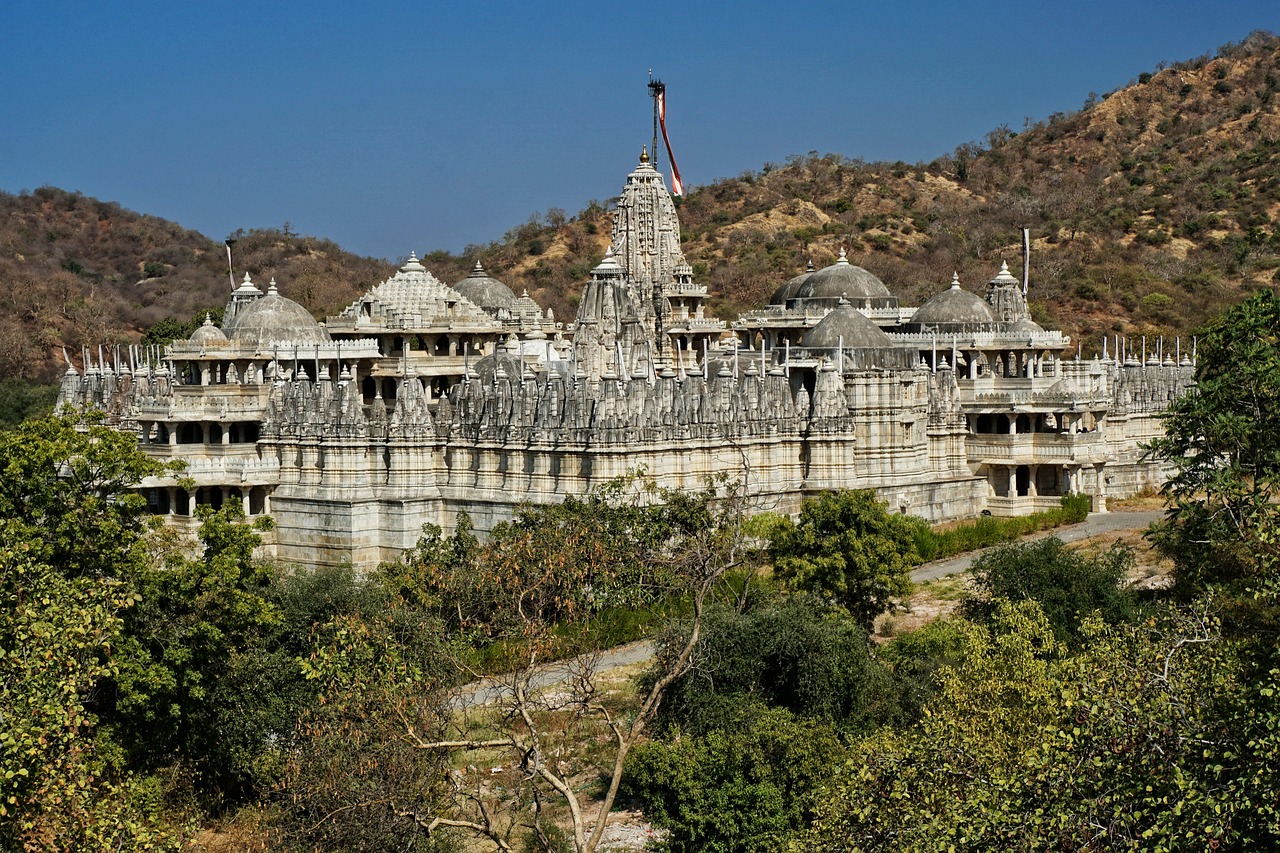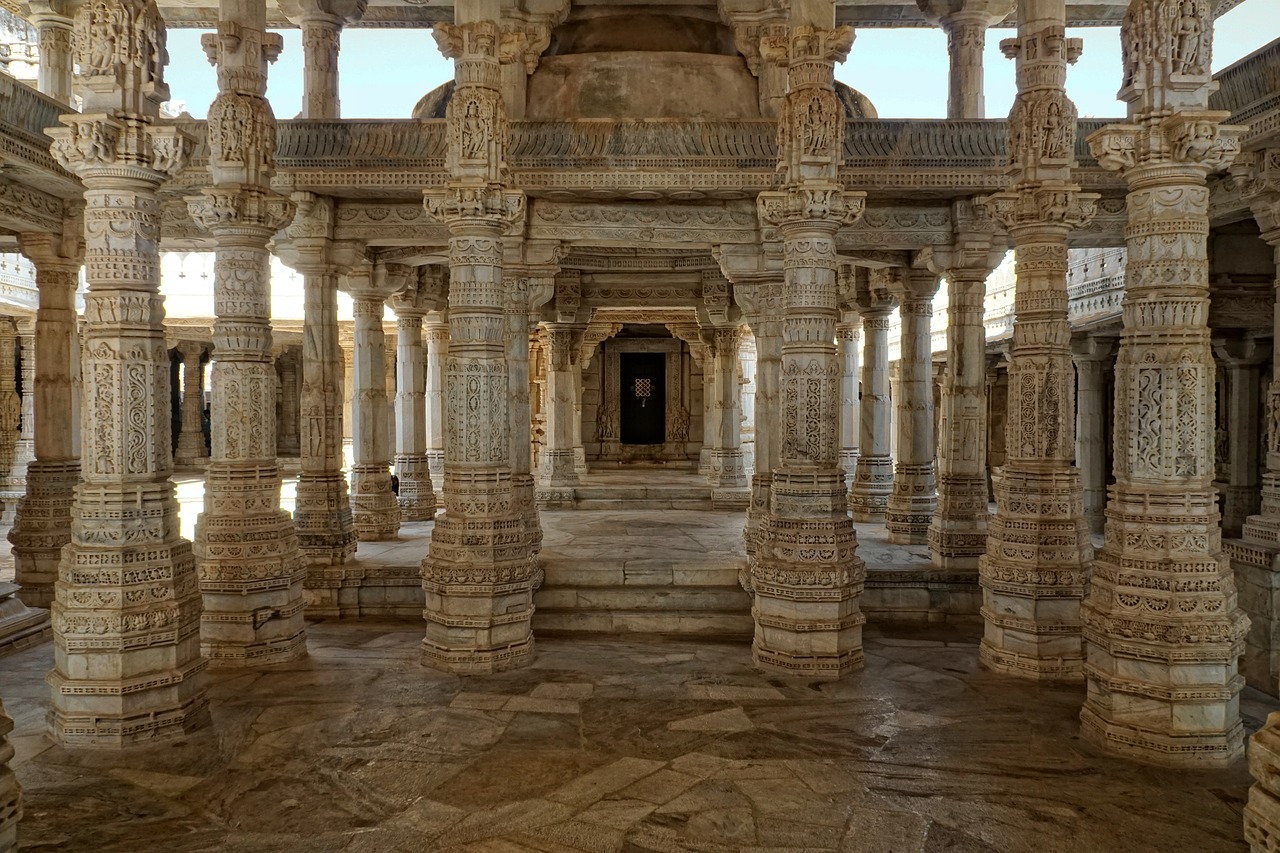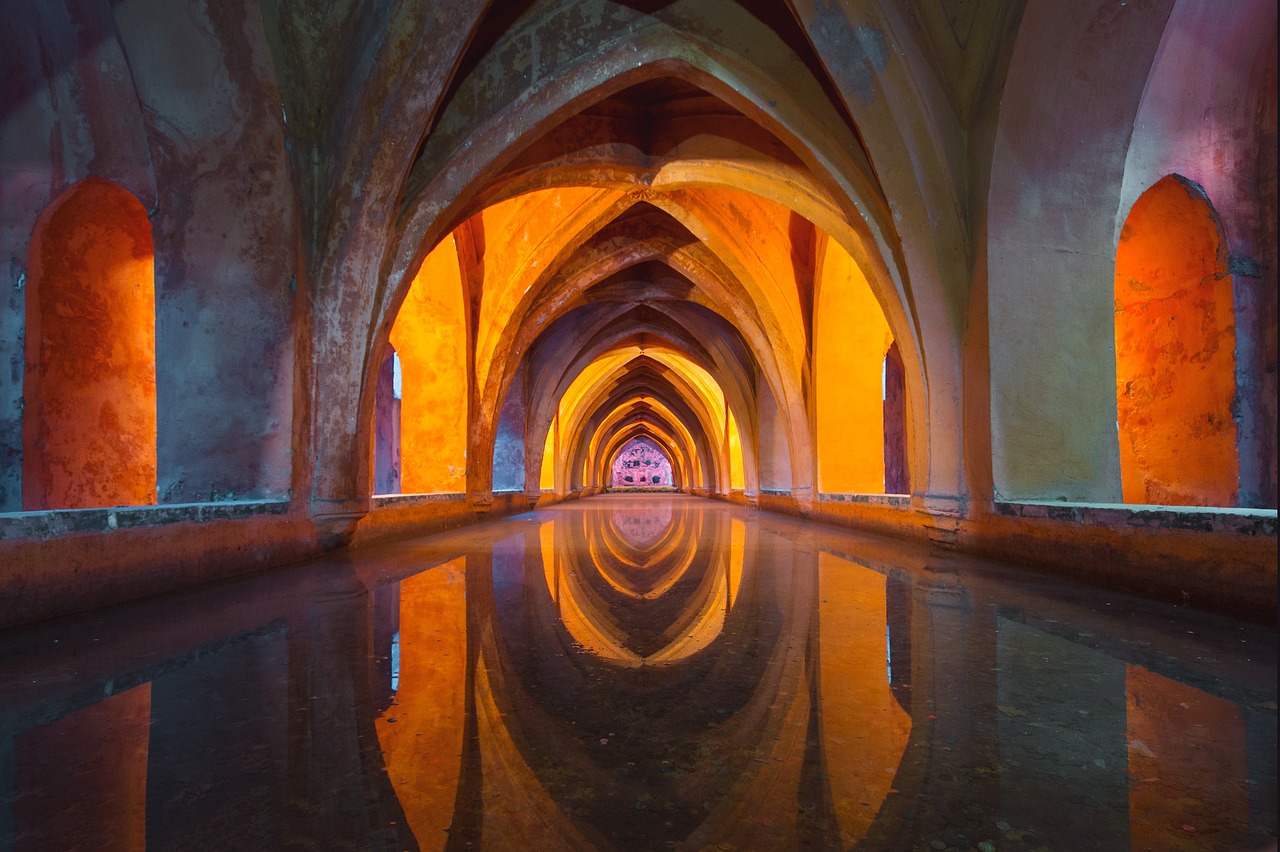Join us on a spiritual journey to one of India’s most enchanting sacred destinations: the Shree Digambar Jain Lal Mandir, also known as the Red Jain Temple. Immerse yourself in the captivating world of religious tourism as we explore the divine allure of this magnificent temple, where history, faith, and culture seamlessly intertwine. Be prepared to be transported to a realm of tranquility and reverence as we delve into the rich heritage and architectural splendor of this remarkable Jain temple. Are you ready to embark on this transformative experience?

Overview
The Shree Digambar Jain Lal Mandir, popularly known as the Red Jain Temple, is a magnificent religious site located in the heart of Delhi, India. This historic temple holds immense religious and historical significance for the Jain community and attracts thousands of visitors every year. Its stunning architecture, rich traditions, and spiritual ambiance make it a must-visit destination for anyone seeking a deeper understanding of Jainism and a peaceful retreat from the bustling city life.
Location
Situated in the bustling Chandni Chowk area of Old Delhi, the Red Jain Temple stands as a striking landmark amidst the chaotic streets and vibrant markets. Its prime location makes it easily accessible for both locals and tourists. Surrounded by age-old buildings and narrow lanes, the temple exudes a unique charm that transports visitors to a bygone era.
History
The Red Jain Temple has a long and fascinating history that stretches back centuries. It was built in 1656 by the renowned Jain merchant, Seth Shri Jugal Kishore, who wanted to create a sanctuary for the Jain community in Delhi. The temple was initially constructed using red sandstone, giving it the distinct red hue that has become its defining characteristic.
Architecture
The architecture of the Red Jain Temple is a true testament to the artistic brilliance of its creators. The temple’s intricate carvings, decorative facets, and majestic spires showcase the mastery of traditional Indian craftsmanship. The fusion of Rajasthani and Mughal architectural styles creates a harmonious blend that reflects the cultural diversity of the region.
Importance
Religious Significance
For the Jain community, the Red Jain Temple is considered a sacred place of worship. It is dedicated to the 23rd Tirthankara, Lord Parshvanath, who holds great importance in Jainism. Devotees flock to the temple to offer prayers, seek blessings, and find solace in the serene atmosphere. The temple also serves as a center for religious teachings and lectures, further enhancing its significance in the Jain community.
Historical Significance
Beyond its religious importance, the Red Jain Temple holds a significant place in India’s history. It stands as a testament to the rich heritage and cultural fabric of the country. The temple has witnessed the rise and fall of dynasties, the winds of change, and the passage of time, making it a living relic that connects the present to the past.

Festivals and Celebrations
Mahavir Jayanti
Mahavir Jayanti, the birth anniversary of Lord Mahavir, is one of the most significant festivals celebrated at the Red Jain Temple. Devotees gather in large numbers to honor and pay homage to the revered Jain spiritual leader. Elaborate rituals, processions, and religious discourses take place within the temple premises, creating a vibrant and joyous atmosphere.
Paryushan Parva
Paryushan Parva, also known as the Festival of Forgiveness, is another important festival celebrated at the Red Jain Temple. Lasting for eight days, this period is dedicated to self-reflection, repentance, and seeking spiritual enlightenment. Devotees observe fasts, engage in prayers, and participate in various religious activities during this auspicious time.
Diwali
Diwali, the festival of lights, holds a special place in the hearts of Indians of all faiths. At the Red Jain Temple, Diwali is celebrated with immense enthusiasm and fervor. The temple premises are adorned with beautiful lights and decorations, creating a mesmerizing sight. Devotees offer prayers for prosperity and well-being, and the atmosphere is filled with joy and jubilation.
Visiting the Red Jain Temple
Opening Hours
The Red Jain Temple welcomes visitors from early morning till late evening. The temple opens its doors at 5:30 AM and remains accessible until 9 PM, allowing ample time for devotees and tourists to explore its beauty and engage in prayers or meditation.
Dress Code
While visiting the Red Jain Temple, it is important to dress conservatively and respectfully. Both men and women are advised to wear modest clothing that covers their shoulders and knees. Avoid wearing revealing or inappropriate attire as a mark of respect for the sacredness of the space.
Etiquette
When entering the Red Jain Temple, it is essential to maintain a respectful and quiet demeanor. Talking loudly, taking photographs inside the temple, or engaging in any disruptive behavior is considered inappropriate. Visitors are encouraged to observe the customs and rituals of the temple and follow the guidance of the temple staff.

Exterior
Red Stone Architecture
The Red Jain Temple gets its name from the vibrant red sandstone used in its construction. The facade of the temple is adorned with intricate carvings and decorative motifs, showcasing the craftsmanship of the artisans. The rich red color of the stone exudes a sense of grandeur and draws attention from afar, making the temple a captivating sight for passersby.
Temple Complex
Spread across a spacious area, the Red Jain Temple boasts a well-planned temple complex. The complex houses multiple smaller temples dedicated to various Jain Tirthankaras, each adorned with splendid idols and elegant artwork. The overall layout provides ample space for devotees to move around and engage in their religious rituals.
Courtyard
At the heart of the Red Jain Temple is a peaceful courtyard, providing a serene oasis away from the chaos of the surrounding city. Lush greenery, beautiful fountains, and intricately designed walkways create a tranquil atmosphere that invites visitors to sit, reflect, and soak in the spiritual energy. The courtyard serves as a gathering place for devotees and a venue for religious ceremonies and cultural performances.
Interior
Main Sanctum
The centerpiece of the Red Jain Temple is the main sanctum, where the main deity, Lord Parshvanath, resides. The sanctum is beautifully adorned and resonates with an aura of divinity. Devotees offer prayers, touch the feet of the idol for blessings, and engage in moments of introspection and spiritual connection.
Idols and Artwork
The interior of the Red Jain Temple is a visual treat for art enthusiasts and devotees alike. The walls are adorned with intricate murals depicting scenes from Jain scriptures and the lives of revered Jain saints. Intricately carved idols of Tirthankaras adorn the temple halls, showcasing the artistic brilliance of the craftsmen.
Prayer Halls
The temple houses spacious prayer halls where devotees come together to participate in religious ceremonies and collective prayers. The halls are designed to accommodate a large number of people and provide a serene atmosphere for collective worship. These prayer halls serve as a meeting point for the Jain community, fostering a sense of unity and shared spirituality.
Architectural Highlights
Sculptures and Carvings
The Red Jain Temple is renowned for its breathtaking sculptures and intricate carvings. From the intricately detailed human figures to the mesmerizing depictions of mythical creatures, every carving tells a story and adds to the temple’s architectural grandeur. The meticulous attention to detail and the artistry on display are a testament to the skill and craftsmanship of the artisans.
Jharokha Balconies
One of the standout features of the Red Jain Temple is its jharokha balconies. These intricately designed balconies adorn the exterior walls, providing a unique architectural element that adds to the temple’s beauty. Visitors can marvel at the richly decorated jharokhas and imagine the historical significance they held in the past.
Pillars
The temple’s impressive pillars are another architectural highlight. These ornate pillars, adorned with intricate carvings and elaborate motifs, showcase the unique craftsmanship of the artisans. Each pillar tells a story and adds to the overall aesthetic appeal of the temple, creating a mesmerizing sight for visitors.
Jain Principles and Beliefs
Ahimsa (Non-Violence)
Jainism is centered around the principle of Ahimsa, which advocates for non-violence towards all living beings. This core belief is reflected in the teachings of Jainism and serves as a guiding principle for the followers of the faith. The Red Jain Temple serves as a symbol of Ahimsa, reminding visitors of the importance of compassion and respect for all forms of life.
Karma
The concept of Karma holds great significance in Jain philosophy. It refers to the idea that every action and intention we have in life has consequences, shaping our present and future. The Red Jain Temple provides a space for devotees to reflect on their actions, strive for purity of thought, and understand the role of Karma in their spiritual journey.
Nirvana
Nirvana, the ultimate goal of Jainism, represents liberation from the cycle of birth and death. It is believed that achieving Nirvana brings an end to the cycle of suffering and leads to eternal bliss. The Red Jain Temple serves as a place where devotees can seek spiritual enlightenment, connect with their inner selves, and strive towards attaining Nirvana.
Charitable Activities
Schools and Hospitals
The Red Jain Temple is not only a place of worship but also a hub for charitable activities. The temple actively supports educational initiatives, running schools and educational institutions that provide quality education to underprivileged children. Additionally, the temple’s charitable endeavors extend to healthcare, with the establishment of hospitals and clinics that cater to the medical needs of the less fortunate.
Animal Welfare
Jainism places great emphasis on the protection of all forms of life. The Red Jain Temple actively promotes animal welfare and supports various initiatives aimed at the well-being and preservation of animals. The temple organizes campaigns to raise awareness about animal rights and encourages compassion towards animals among its followers.
Conclusion
Visiting the Red Jain Temple is not just a tourist experience; it is a spiritual journey that provides a profound sense of peace and tranquility. The temple’s stunning architecture, rich history, and devout atmosphere transport visitors to a realm of spiritual awakening. It stands as a proud testament to the enduring values and beliefs of Jainism, while also serving as a beacon of hope and service to humanity. The Red Jain Temple truly exemplifies the essence of Indian culture and the importance of preserving and conserving our religious heritage for generations to come.
